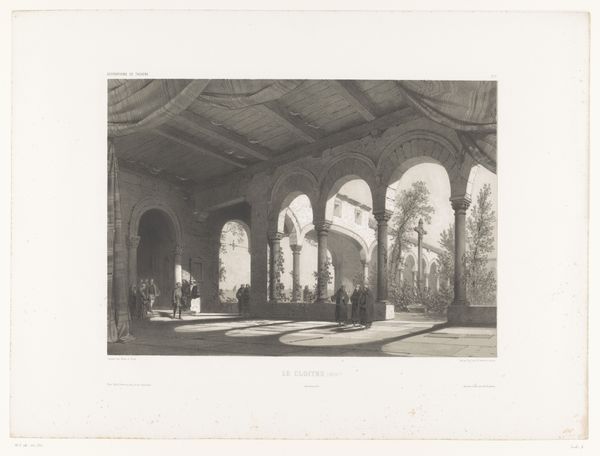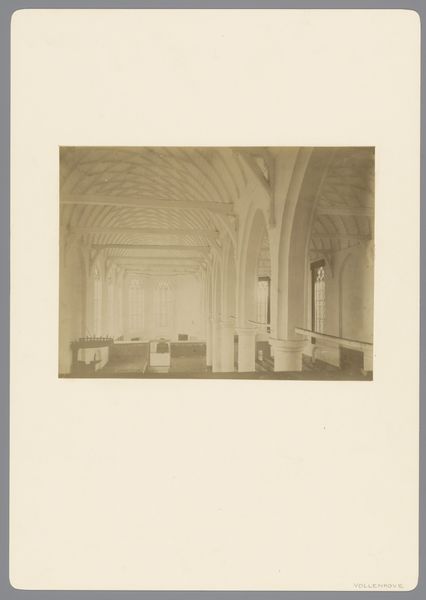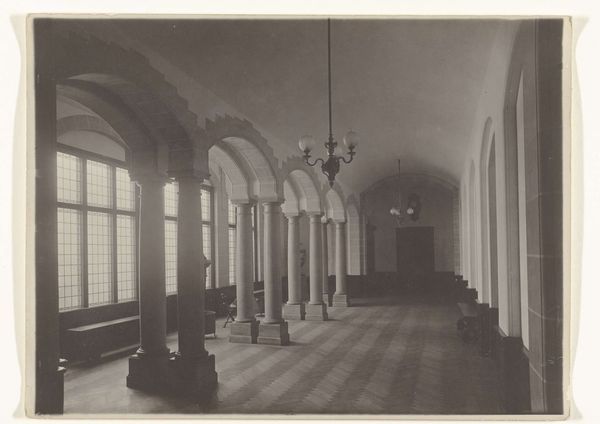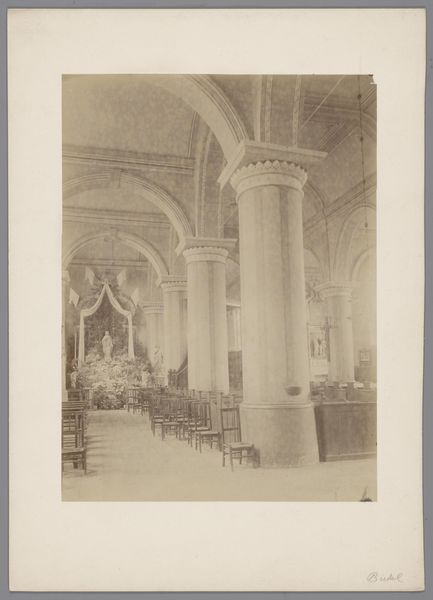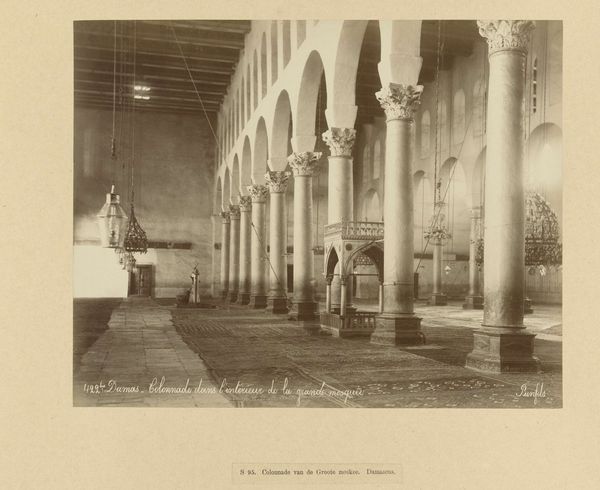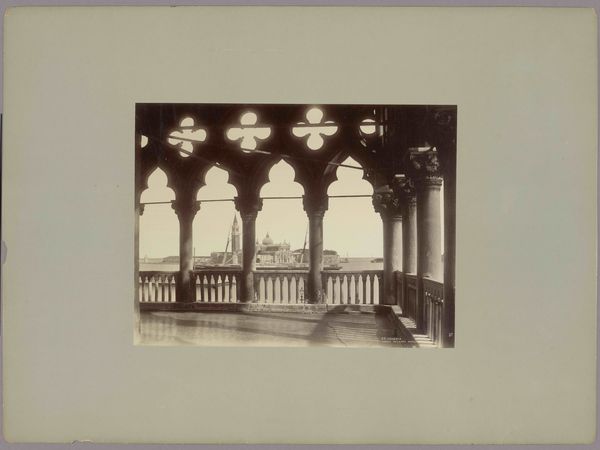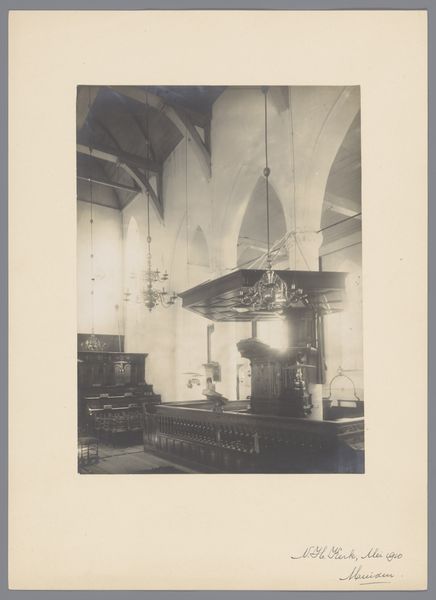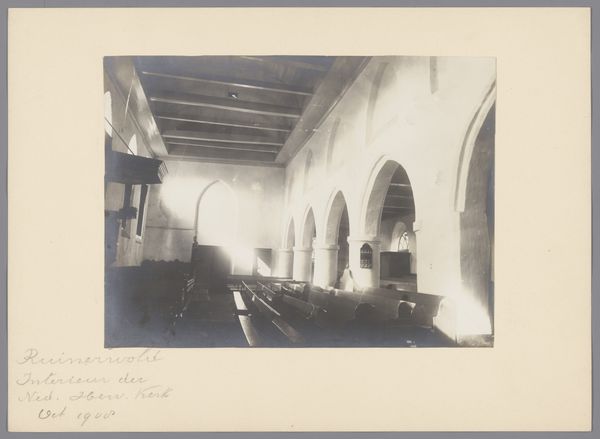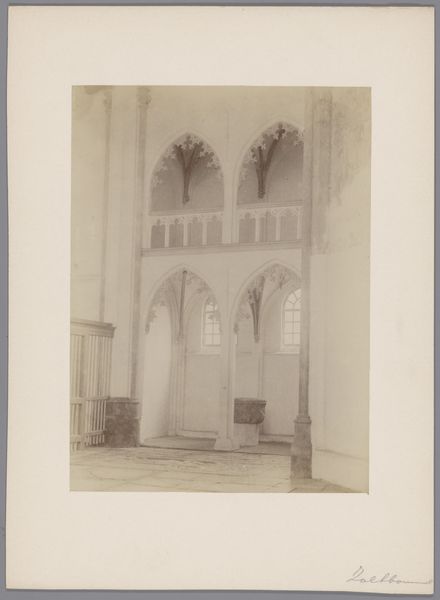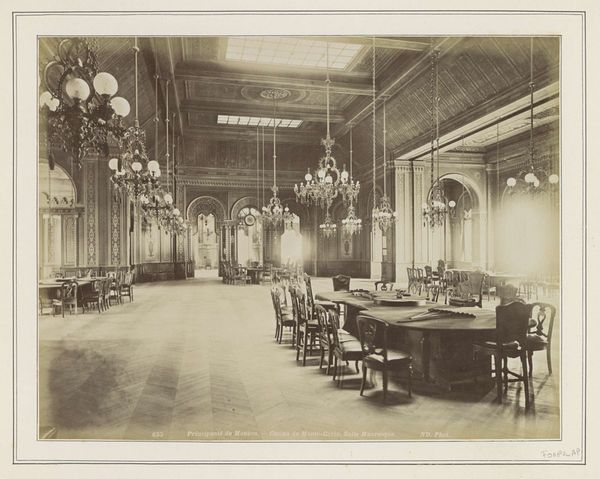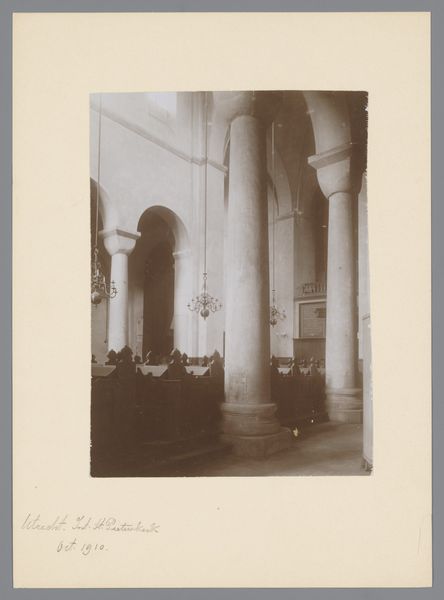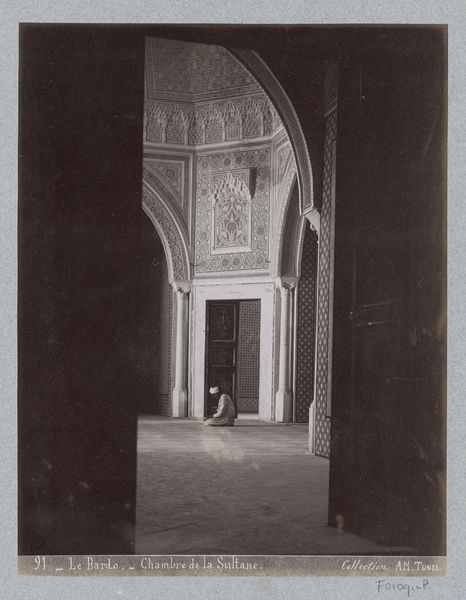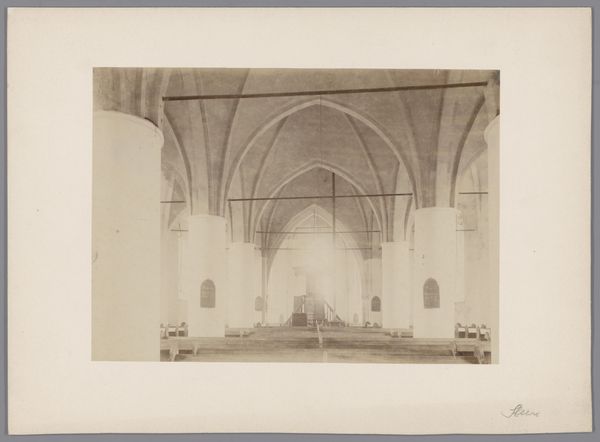
Interieur van het paleis van de Sultan van Deli, Sumatra (Palais des Sultans von Deli Interieur) c. 1885 - 1900
0:00
0:00
photography
#
landscape
#
photography
#
orientalism
#
islamic-art
Dimensions: height 266 mm, width 360 mm
Copyright: Rijks Museum: Open Domain
Curator: The atmosphere is serene, almost ghostly. A large hall, sparsely furnished, with light streaming in… It feels staged, a tableau vivant more than a lived-in space. Editor: Indeed. What you are seeing is a photograph from around 1885 to 1900, titled "Interieur van het paleis van de Sultan van Deli, Sumatra," by Carl J. Kleingrothe, housed right here at the Rijksmuseum. It offers a glimpse into the palace of the Sultanate of Deli. Curator: Kleingrothe masterfully employs a central vanishing point. The receding lines of the architecture pull the eye deep into the image, emphasizing the immense scale. The interplay of shadow and intense light flooding in creates depth, but the limited palette keeps it rather subdued. Editor: And what about the broader context? Deli was significant for tobacco plantations at this time, so images like this reflect Dutch colonial interests, presenting the opulence enabled by those plantations. These images circulated widely, shaping European perceptions of the "exotic" East. It is part of a bigger genre. Curator: Yes, the “orientalist” genre. Consider the rhythm of those arches, repeated and slightly distorted as they recede. It generates a kind of visual rhyme that feels very intentional. Do you agree that the patterns of decoration and even the composition of furniture almost become another visual element, carefully composed? Editor: Absolutely. Photography was then both a tool for documentation and, simultaneously, a vehicle for constructing particular narratives. Images of regal life implied control, a tamed “exoticism” beneficial for colonial commerce. Curator: Interesting. For me, looking closely, I am really intrigued by the texture of the image itself, how the photographic grain almost gives a slight softness, even vagueness to all the architectural detailing… Editor: Well, it definitely speaks to photography’s evolving role as both art and political tool, and it challenges how we interpret this “documentary” piece today. Curator: I will certainly leave with fresh appreciation of photography as cultural artifact. Editor: I agree. Thank you for your very nuanced formalism!
Comments
No comments
Be the first to comment and join the conversation on the ultimate creative platform.
